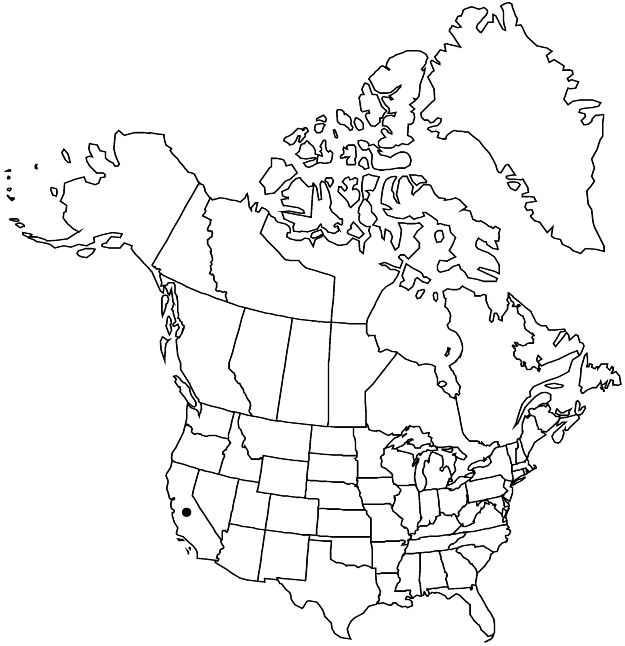Horkelia clevelandii var. clevelandii
Plants tufted, green to grayish. Stems ascending to erect, 1–5 dm, hairs spreading. Basal leaves planar, 5–15 (–18) × 1–2.5 cm; stipules entire; leaflets 6–12 per side, ± separate, cuneate to nearly round, 5–12 (–15) × 4–13 mm, nearly as wide as long, divided 1/3 to midrib into 5–10 acute to obtuse teeth, canescent and often short pilose, sparsely pilose on midveins and margins. Cauline leaves (2 or) 3–6. Inflorescences mostly open, flowers arranged individually and in glomerules. Pedicels (1–) 1.5–6 mm. Flowers 9–13 mm diam.; epicalyx bractlets ± lanceolate, 2–3.5 × 0.5–1.5 mm, ± 3/4 length of sepals, entire; hypanthium 1–1.5 × 2–4 mm, ± 1/2 as deep as wide, interior glabrous; sepals ± reflexed, lanceolate, 2.5–4 mm; petals broadly oblanceolate, 3–6 × 2 mm, apex usually rounded; filaments 0.5–1.5 × 0.4–0.6 mm, anthers 0.5–1 mm; carpels (15–) 20–40 (–60); styles 1.3–1.6 mm. Achenes brown, 1–1.3 mm, usually smooth.
Phenology: Flowering summer.
Habitat: Dry meadows, in conifer woodlands
Elevation: 1200–2500 m
Distribution

Calif., Mexico (Baja California)
Discussion
Variety clevelandii occurs primarily on the Peninsular Ranges of Riverside and San Diego counties. Although most populations from Baja California belong to var. brevibracteata, historical collections from northern Baja California by C. R. Orcutt (GH, ND-G, UC), including a syntype of Horkelia clevelandii, have the diagnostic features of var. clevelandii. Populations in San Diego County serve as the sole larval host plant for the federally endangered Laguna Mountains Skipper, Pyrgus ruralis lagunae Scott.
Selected References
None.
Lower Taxa
"thin" is not a number.No values specified."dm" is not declared as a valid unit of measurement for this property."dm" is not declared as a valid unit of measurement for this property."dm" is not declared as a valid unit of measurement for this property.